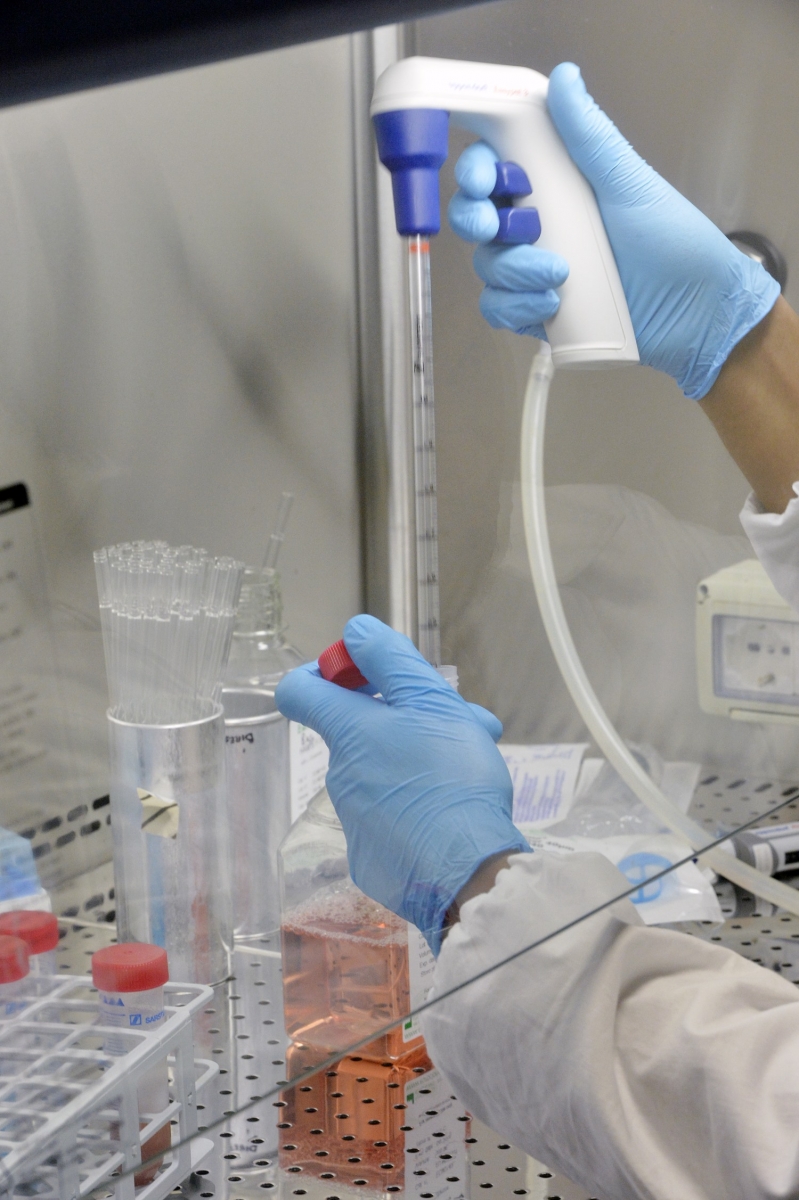A clinical study on spinal and bulbar muscular atrophy, recently published in “Science Translational Medicine”, might lead to interesting developments: researchers chose intranasal administration to deliver the drug therapy and this strategy proved successful because it directly benefits impaired neurons and peripheral tissue through the central nervous system. It is quick, safe and efficient.
Spinal and Bulbar Muscular Atrophy (SBMA), also known as Kennedy disease, is a severe neurodegenerative disorder. It leads to the death of motor neurons, which originate in the spinal cord and ensure locomotion and the mobility of skeletal muscles. The disease is caused by a mutation of the androgen receptor and affects the male population because men have higher androgen levels compared to women.
 The authors of the study published in “Science Translational Medicine” include Maria Josè Polanco, Diana Piol, Mathilde Chivet and Maria Pennuto (in the photo ©Roberto Bernardinatti - University of Trento photo collection), researchers at the Dulbecco Telethon Institute of the Centre for Integrative Biology – Cibio of the University of Trento, and a number of colleagues who have long been working with them: Andrew C. B. Cato, Albert R. La Spada, Fabio Sambataro, Kenneth H. Fischbeck and Illana Gozes, with researchers from other institutions.
The authors of the study published in “Science Translational Medicine” include Maria Josè Polanco, Diana Piol, Mathilde Chivet and Maria Pennuto (in the photo ©Roberto Bernardinatti - University of Trento photo collection), researchers at the Dulbecco Telethon Institute of the Centre for Integrative Biology – Cibio of the University of Trento, and a number of colleagues who have long been working with them: Andrew C. B. Cato, Albert R. La Spada, Fabio Sambataro, Kenneth H. Fischbeck and Illana Gozes, with researchers from other institutions.
«In our preclinical study – explained the researchers of Cibio in Trento – we have identified a molecule (peptide), a soluble protein, that can be given intranasally. In this way, it directly passes into the central nervous system and reaches the neurons that ensure body motion and the movement of skeletal muscles, which are difficult to reach using an intravenous or intramuscular approach. We have seen that the peptide has an effect on peripheral tissue too, including skeletal muscle, which is compromised in patients with SBMA».
 What are the possible outcomes? «When the protein reaches the impaired motor neurons, it reduces levels in the mutant androgen receptor and slows down the disease progression, mitigating its impact».
What are the possible outcomes? «When the protein reaches the impaired motor neurons, it reduces levels in the mutant androgen receptor and slows down the disease progression, mitigating its impact».
The study was co-funded by Telethon (Italy and USA), the Autonomous Province of Trento and other national and international organizations.
The article, “Adenylyl cyclase activating polypeptide reduces phosphorylation and toxicity of the polyglutamine-expanded androgen receptor in spinobulbar muscular atrophy”, is authored by:
Maria Josè Polanco, Diana Piol, Mathilde Chivet and Maria Pennuto, (University of Trento, Italy); Sara Parodi, Stefano Espinoza, Andrea Contestabile and Anna Rocchi (Italian Institute of Technology, Italy); Conor Stack, Christopher Grunseich and Kenneth H. Fischbeck (NINDS-NIH, USA); Helen C. Miranda and Albert R. La Spada (University of California, San Diego, USA); Patricia M.-J. Lievens (University of Verona, Italy); Tobias Jochum and Andrew C. B. Cato (Karlsruhe Institute of Technology, Germany); Raul R. Gainetdinov (St. Petersburg State University, Russia); Andrew P. Lieberman (University of Michigan, Ann Arbor, USA); Fabio Sambataro (University of Udine, Italy); Illana Gozes (Tel Aviv University, Israel).
To read the abstract visit: http://stm.sciencemag.org/content/8/370/370ra181


